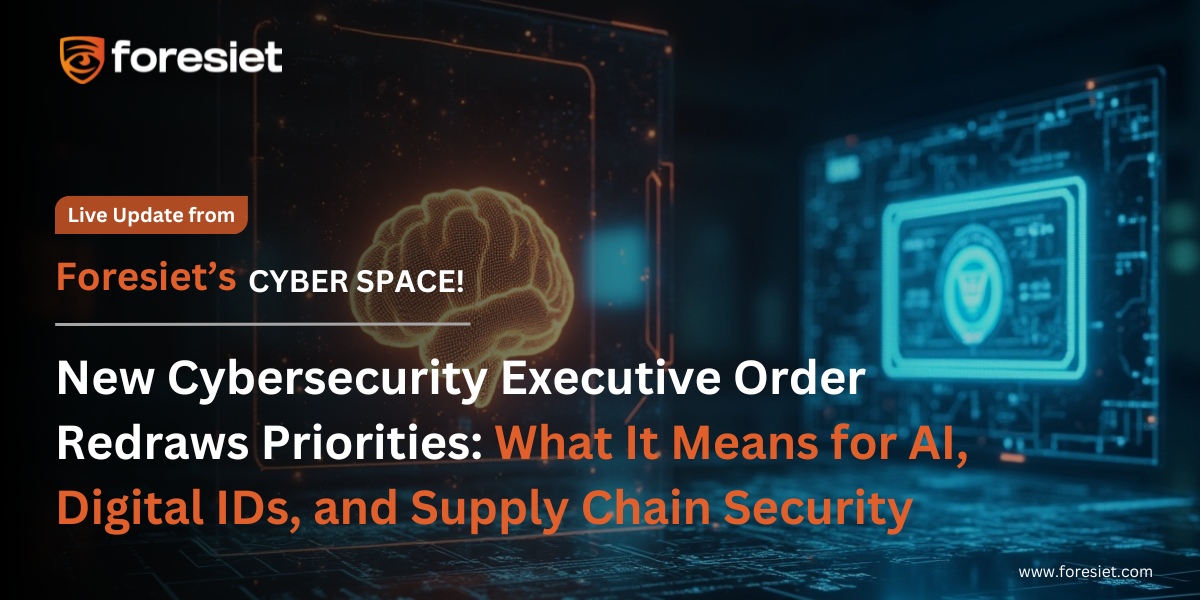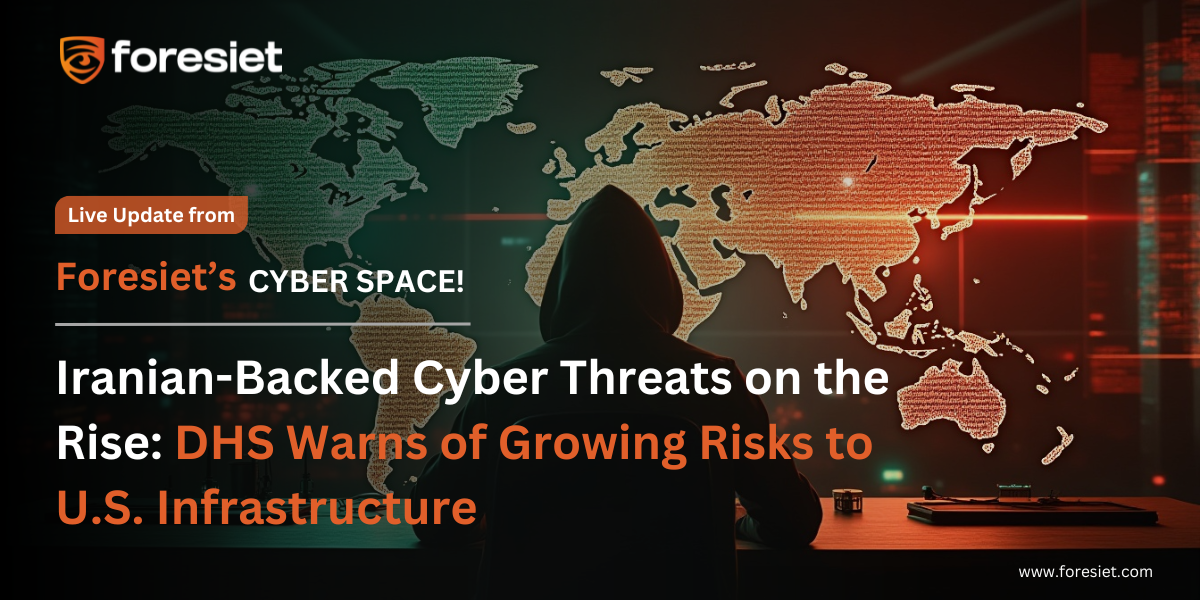New Cybersecurity Executive Order Redraws Priorities: What It Means for AI, Digital IDs, and Supply Chain Security

As the global cyber threat landscape continues to evolve, the latest cybersecurity executive order from the Trump administration is making waves—setting new priorities while reversing some of the cornerstone initiatives from previous administrations.
The new directive pivots away from centralized federal control and compliance-heavy practices, placing a sharper focus on AI innovation, post-quantum cryptography, and software security by design.
But what does this shift mean for businesses, government agencies, and cybersecurity professionals? Let’s unpack the details and implications of this major policy change.
1. Goodbye to Government-Issued Digital IDs
One of the most controversial reversals in the executive order is the dismantling of the Biden-era digital identity program. Originally launched to curb digital identity fraud, this initiative aimed to provide Americans with secure, government-backed digital credentials. The Trump administration scrapped the plan, citing concerns over privacy abuse and the potential misuse by undocumented immigrants.
While the move appeals to those favoring limited government intervention, experts argue it may hinder efforts to fight identity theft and credential abuse—which remain rampant on the dark web. Without robust verification frameworks, both public and private sectors remain exposed to identity-based attacks.
2. Rebuilding Cyber Policy Around Innovation and Autonomy
The new EO dramatically shifts the tone and direction of federal cybersecurity efforts:
- AI and Quantum Readiness: It supports the secure implementation of artificial intelligence and fast-track post-quantum cryptography adoption. This reflects the growing urgency to stay ahead of emerging threats that traditional encryption can no longer contain.
- Secure Software by Design: The directive embraces a proactive stance by promoting the NIST Secure Software Development Framework (SSDF). The goal? Encourage enterprises to embed security at the source code level rather than relying on after-the-fact audits and compliance checklists.
- IoT Device Certification: A new Cyber Trust Mark program will recognize devices that meet minimum security standards—part of a broader effort to lock down the vulnerable Internet of Things ecosystem.
3. Leaner Government, Fewer Sanctions, More Autonomy
Another major change: the Cybersecurity and Infrastructure Security Agency (CISA) has faced a reduction in authority, staffing, and funding. The EO curtails its influence, emphasizing decentralized decision-making across federal departments.
Moreover, the government will no longer pursue cyber sanctions against domestic threats unless certain thresholds are met—citing concerns that such powers could be misused for political targeting. While some view this as safeguarding civil liberties, critics worry it could weaken deterrents against homegrown cybercrime.
4. New Steps Toward Regulatory Harmonization
In a rare bipartisan nod, the EO pushes forward an ambitious plan to harmonize federal regulations through “Rules-as-Code”—a pilot initiative that transforms legal frameworks into machine-readable formats. This could drastically simplify compliance for organizations navigating multiple cybersecurity mandates.
Michelle Sahar, a leading AI and cybersecurity policy expert, calls this a "positive step forward." She emphasizes that embedding regulation directly into digital systems aligns security protocols with the pace of AI-driven and quantum-powered threats.
5. Post-Quantum Cryptography: From Planning to Action
A key technical highlight of the EO is its clear mandate to transition federal systems to post-quantum cryptography (PQC). The use of TLS 1.3 and PQC-ready solutions will now be enforced across agencies. CISA and the Department of Homeland Security (DHS) will publish updated lists of PQC-compliant products, moving the conversation from preparation to implementation.
This is a crucial move as quantum computing grows more viable, rendering traditional cryptography vulnerable. For agencies and enterprises alike, now is the time to reassess encryption models and software supply chain vulnerabilities.
6. Catch: Can the Government Deliver Without Talent?
Despite promising directions, there are resource challenges. The EO builds on past programs but arrives on the heels of workforce reductions in critical agencies. Many departments are struggling to hire qualified cybersecurity professionals, let alone ramp up quantum readiness and AI-safe infrastructure.
Tony Monell of Black Kite points out a practical barrier: “No one is going to show you, their code.” Sharing proprietary information with regulators remains a sensitive issue for software companies.
Conclusion: A Bold Move with Mixed Risks
The new Trump cybersecurity executive order makes it clear that the federal government is betting on AI, cryptographic innovation, and decentralized control as pillars of modern cybersecurity. While it introduces bold strategies for resilience, the success of these initiatives hinges on adequate funding, inter-agency collaboration, and private-sector trust.
As cyber threats grow in complexity and scale, organizations must take a proactive approach to compromised data tracking, brand impersonation defense, and digital threat scoring. Aligning your risk posture with emerging federal standards will not only improve your compliance readiness—it will also position your business as a secure and forward-thinking digital leader.
About us!
Foresiet is the pioneering force in digital security solutions, offering the first integrated Digital Risk Protection SaaS platform. With 24x7x365 dark web monitoring and proactive threat intelligence, Foresiet safeguards against data breaches and intellectual property theft. Our robust suite includes brand protection, takedown services, and supply chain assessment, enhancing your organization's defense mechanisms. Attack surface management is a key component of our approach, ensuring comprehensive protection across all vulnerable points. Compliance is assured through adherence to ISO27001, NIST, GDPR, PCI, SOX, HIPAA, SAMA, CITC, and Third Party regulations. Additionally, our advanced antiphishing shield provides unparalleled protection against malicious emails. Trust Foresiet to empower your organization to navigate the digital landscape securely and confidently.
Protect your brand, reputation, data, and systems with Foresiet's Integrated Digital Risk Platform. 24/7/365 threat monitoring for total peace of mind.


July 1, 2025, 7:17 p.m.

July 1, 2025, 7:07 p.m.